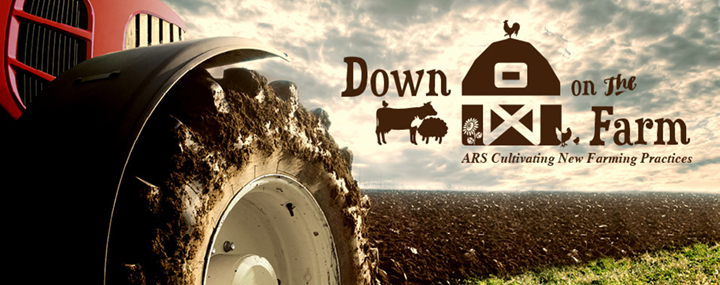
Can Biocontrol Halt the Spread of Invasive Cogongrass?
ARS researchers are testing insects to resolve the problematic weed
An alien invasive grass is growing, spreading and damaging ecosystems from Florida to Texas, but Agricultural Research Service (ARS) scientists are working diligently to slow the invasion.
 Invasive cogongrass, Imperata cylindrica, in Picayune State Park, Florida (Photo by Rene Sforza, USDA-ARS-EBCL, Montpellier, France)
Invasive cogongrass, Imperata cylindrica, in Picayune State Park, Florida (Photo by Rene Sforza, USDA-ARS-EBCL, Montpellier, France)
Cogongrass is a widespread, aggressive perennial grass that grows on all continents, except Antarctica, and is especially problematic in the southeastern United States where it dominates landscapes. Cogongrass can grow in a variety of conditions and climates, and it thrives in both nutrient-poor and water-logged soils. It even survives wildfires and grows quickly, overtaking acres of natural ecosystems, rangelands, agriculture, and forests.
Currently, most cogongrass is controlled with herbicides, which only serve as a temporary solution. The herbicides must be reapplied every 6-12 months.
ARS scientists in the United States and overseas are investigating biological control of cogongrass by collecting and studying insects that feed on the grass where the weed originated. These insects will be screened over many years to determine if they will be safe, and only those that cause no harm to valued plants will be released.
 Dean Brookes (left) and Greg Wheeler search for insects feeding on cogongrass in Alabama. (Photo by Rene Sforza, USDA-ARS-EBCL, Montpellier, France).
Dean Brookes (left) and Greg Wheeler search for insects feeding on cogongrass in Alabama. (Photo by Rene Sforza, USDA-ARS-EBCL, Montpellier, France).
may"We started this project two years ago in collaboration with the USDA ARS Australian Biological Control Laboratory in Brisbane, Australia," said Greg Wheeler, an entomologist with the ARS Invasive Plant Research Laboratory in Fort Lauderdale, FL. "Our goal, in the early stages of this project, is to find the origin of the invasive lineages of cogongrass by comparing DNA from areas where the grass grows in the United States to areas overseas. With this information, we hope to discover and develop biological control agents that are best adapted to our variety of cogongrass."
According to Wheeler, scientists at the USDA lab in Australia have already discovered 65 insect species that feed on cogongrass, with many new to science.
"In just a year, they had two to three species colonized in the Australian laboratory," said Wheeler. "They were very successful in getting certain species colonized, such as a stem-boring caterpillar and shoot-boring fly. Both species were introduced into quarantine in December 2023. This is a testament to the diversity of potential agents and the resourcefulness of the USDA Australian laboratory."
Wheeler and his team imported two potential biological control agents from Australia to U.S. quarantine for testing: the shoot tip borer Atherigona sp., and the crown borer Emmalocera latilimbella. (See photos).
 Adult moth and late stage larva of the crown borer Emmalocera latilimbella which were introduced into U.S. quarantine in December 2023 and February 2024. Because the larvae take three months to complete development it is too early to tell if researchers are successful colonizing this species. But adults emerged from plants collected in Australia, they produced eggs and larvae which are growing inside stems of Florida plants in quarantine. (Photo by Greg Wheeler USDA-ARS-IPRL, Ft Lauderdale, FL) The shoot tip borer Atherigona sp. was introduced into U.S. quarantine in December 2023 and February 2024. After two generations in quarantine and rearing on Florida plants it appears successfully colonized. (Photo by Christine Sanderson USDA-ARS-ABCL / CSIRO Brisbane, Australia)
Adult moth and late stage larva of the crown borer Emmalocera latilimbella which were introduced into U.S. quarantine in December 2023 and February 2024. Because the larvae take three months to complete development it is too early to tell if researchers are successful colonizing this species. But adults emerged from plants collected in Australia, they produced eggs and larvae which are growing inside stems of Florida plants in quarantine. (Photo by Greg Wheeler USDA-ARS-IPRL, Ft Lauderdale, FL) The shoot tip borer Atherigona sp. was introduced into U.S. quarantine in December 2023 and February 2024. After two generations in quarantine and rearing on Florida plants it appears successfully colonized. (Photo by Christine Sanderson USDA-ARS-ABCL / CSIRO Brisbane, Australia)
"We recently had these Australian flies complete development and emerge from Florida-grown cogongrass plants in quarantine, signaling the first steps of successful colonization," Wheeler added. "This fly has a short life cycle where egg hatch to adult emergence takes 25-30 days. There is also the Australian moth (from the stem-boring caterpillar) laying eggs, and larvae are feeding on Florida cogongrass. We are hopeful this species will also colonize our Florida cogongrass in quarantine."
In addition, researchers are conducting DNA analysis to match cogongrass in the United States with cogongrass growing in Australia, Japan, Indonesia, China, and Africa, etc.
"Not only are we prioritizing the weed origin, but we are also focusing on selecting insects that will cause the most damage to the target weed while sparing valued plants that grow in the region," said Wheeler. "Once colonized in quarantine, these insects will be tested to determine their safety for release. This will take many years and will include numerous experiments that are the gold-standard to determine safety. Those insects that don’t pass the tests will be dropped from consideration." —Tami Terella-Faram, ARS Office of Communications
